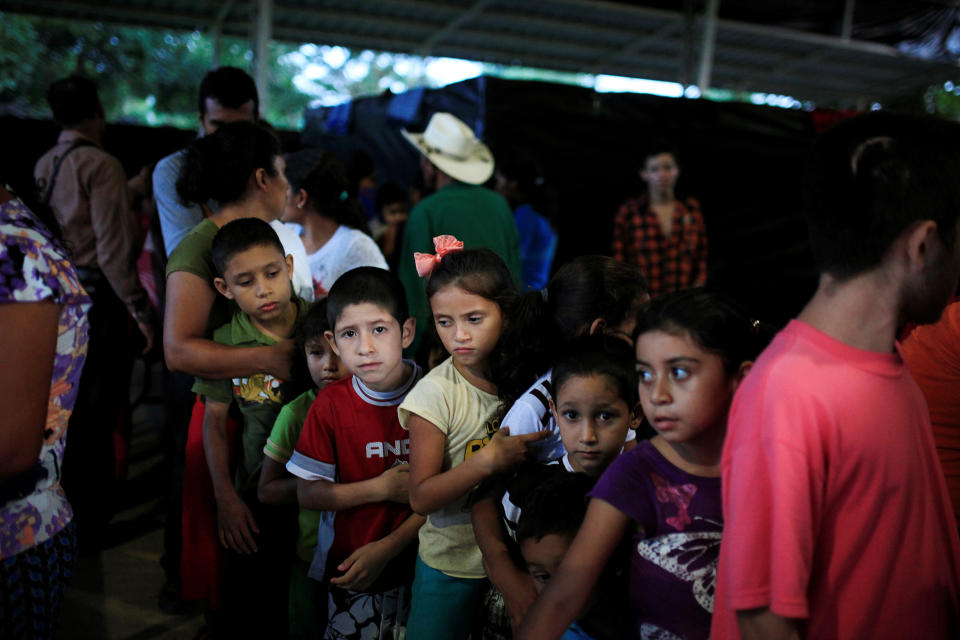From the 'Northern Triangle' to the Rio Grande: Violence, poverty and disasters drive migration
Of the families crossing the southwestern U.S. border in recent months, the vast majority are from the Northern Triangle of Central America — El Salvador, Honduras and Guatemala.
These countries are the origin of a large number of immigrants who’ve come to the United States fleeing violence and poverty.
Randy Capps, director of research for U.S. programs at the Migration Policy Institute, said the number of Salvadorans crossing the border has declined, but the number of Guatemalans has increased.
“Guatemala probably has the most potential in the longer term to be sending the most migrants to the U.S.,” he said. “It’s probably responsible for about half of all the families and children being apprehended right now.”
In Guatemala, where violence isn’t as severe as in the two other Northern Triangle countries, poor agriculture and natural disasters are driving migrants to the United States. Capps said most Guatemalans migrating to the border are indigenous people from rural areas.
“They’re really not connected to the modern economy there,” he said. “There are very few job opportunities at all, and a lot of people are in an assisted situation.”
The population of El Salvador, which suffers more gang violence than the other two countries, has been on a steady decline. Capps said that has contributed to their lower migrant numbers.

Slideshow: Dozens dead after volcano erupts in Guatemala >>>
Mike Allison, chair of the department of political science at the University of Scranton, said recently that Hondurans crossing the border have spoken of violence related to the recent elections. The country also has a high birthrate and is very poor.
A newer factor driving migration to the United States, Allison said, is climate change, which Central America has suffered from.
“There’s been no water, and then when the waters come, it’s been flooding,” he said. “And so it has really affected the ability of farmers to grow crops, whether small-scale farmers or larger [farms].”
Immigration to the border is somewhat seasonal, with the busier months being April through July, but social and political changes can also make a difference.
“Bottom line, the issues that have driven migration from the Northern Triangle have remained pretty constant, and what we’ve seen is an up-and-down that reflect unique events that happened — Trump’s election, an election in Honduras,” said Eric Olson, deputy director of Latin American studies at the Wilson Center, a nonpartisan research organization.
In 2014, a surge in women and children from the Northern Triangle coming across the border resulted in a political dilemma for the Obama administration. Jeh Johnson, the secretary of homeland security at the time, spoke with the Skullduggery podcast about the current drive in immigrants.

Although violence and poverty have existed in the Northern Triangle for decades, what was pushing migration in 2014, Johnson said, was misinformation spread by smugglers.
“What was driving it at that point is the same thing that’s driving it now — poverty and violence in Guatemala, El Salvador and Honduras,” he said.
“The smugglers, the coyotes, were putting out this message that the United States government is putting out permisos, free passes, to come to the United States,” he said.
Capps said immigration is sensitive to changes in policy. After Trump was elected, immigration dropped off slightly. The talk on tough immigration policy reduced the numbers of migrants reaching the border.
“By the end of [2017], I think people started to realize that there was more bark than bite in the Trump administration’s policy,” he said. “Some things were happening but not on a large scale.”
Olson said Trump wants make things as miserable on the border as they are in Central America so that immigrants are deterred from coming over, but he said that won’t solve the problem.
“Failing to address the issues in Central America is really failing to deal with the underlying drivers of migration,” he said. “And no amount of border security is going to make that much difference.”

The current immigration crisis is still relatively small and manageable and will remain that way for the time being, in Capps’ view. But migrants will not stop coming over the border until things in their countries improve.
“My sense is that in Honduras and Guatemala — more so in Guatemala than the other two countries — the push factors are pretty strong,” he said. “And they’re going to remain in place. So I think there still will be people coming, trying to flee violence, trying to flee desperate economic circumstances, until things get resolved.”
_____
Read more from Yahoo News:
Stephen Miller, meet your great-grandfather, who flunked his naturalization test
Businesses have made millions off Trump’s child separation policy
The dominance game, as played by dictators and other animals
With DACA phasing out, college graduates face an uncertain future
Photos: Melania Trump makes surprise visit to migrant child facility in Texas


